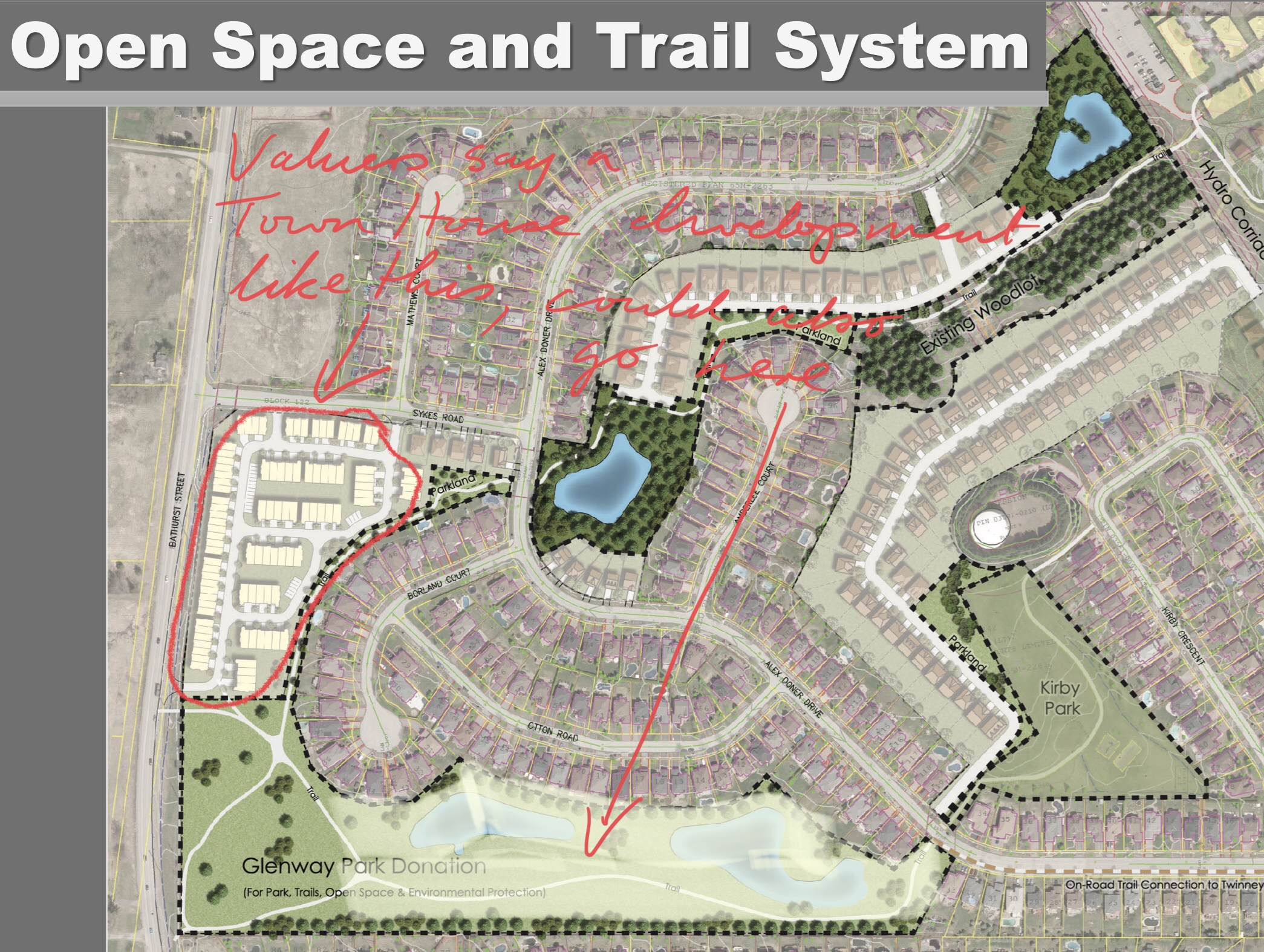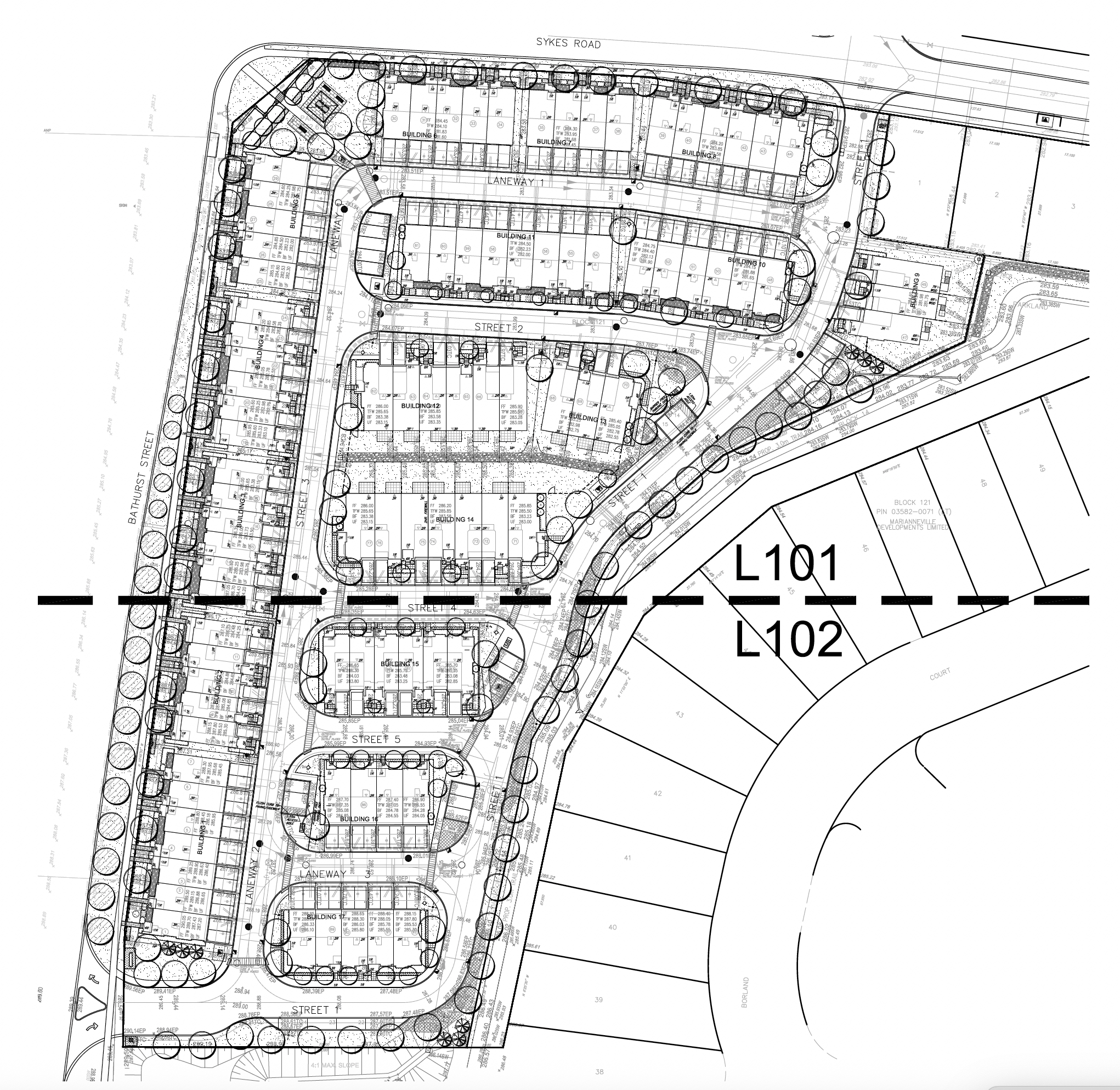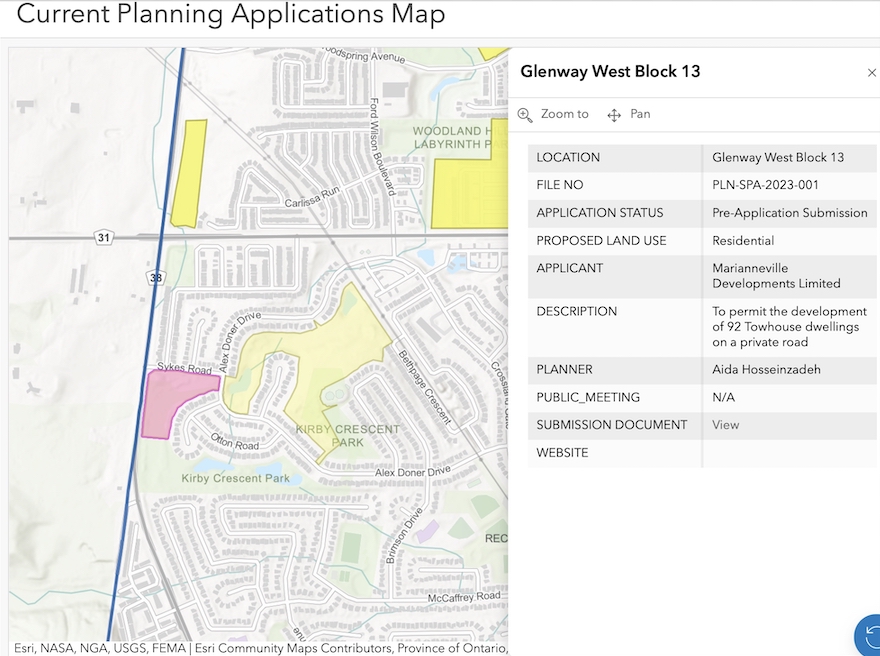Over the years I have written extensively about the tax certificate given by the Town of Newmarket in December 2021 to the developer Marianneville in exchange for 16 acres of gifted land at Glenway West. 
To me, the whole thing from start to finish was a three-card trick allowing the developer to offset millions of dollars in tax owing to the Canada Revenue Agency for land which, in my view, was largely undevelopable.
Question: When do developers give land away?
Answer: When they can't make a profit from developing it.
I’ve probably squeezed the orange dry on Glenway West so let this be my parting shot.
Rules not followed
I wrote to the Canada Revenue Agency three years ago with my detailed concerns but got no response other than an acknowledgement. My letter sits in the back of some filing cabinet in Ottawa, unlikely ever to see the light of day again. The CRA rules on charitable donations of land were not followed in every respect.
As soon as I got hold of the valuation report itself, I knew the valuation of the Glenway West land by Bottero & Associates was completely bogus.
Extraordinary Assumptions
Bottero relied on a raft of “extraordinary assumptions” to conclude that two thirds of the 16 acres of land was developable and worth over $14M. To anyone reading the valuation report (and who is not a valuer), this requires the willing suspension of disbelief.
Why didn’t the valuer formally consult the Town’s Director of Planning and Director of Engineering before making his “extraordinary assumptions”?
Why don’t valuation protocols from the Appraisal Institute of Canada specifically mandate this?
Potentially supportable
The Town’s Chief Administrative Officer, Ian McDougall, told me last month that if Bottero had consulted the Town’s Director of Planning he would have been told that
“development of some of these lands could potentially be supportable subject to the necessary justification studies and technical reports”.
The valuer posited that if the Town did not require the land to be used for park purposes at some indeterminate point in the future (itself a bizarre proposition) it could be used for a Town house development just like the one about to be built at Bathurst and Sykes. (See graphic right)
Medium Density 
I scoffed at the valuer’s view that a medium density Town House development could be seamlessly inserted into a rectangular piece of land which is (a) currently home to two storm water ponds and is (b) surrounded on three sides by an established neighbourhood of single dwelling houses. Could such a townhouse development sit easily alongside single family homes? (Graphic below right: Glenway Block 13. The Town house development)
On 21 December 2023, a submission to the Town by planners Zelinka Priamo Ltd on behalf of Marianneville, set out principles to be applied when considering the treatment of infill development in established neighbourhoods. These principles called for
- Separation appropriate to the building type, mass, and height.
- Plan “like-to-like” housing forms where adjacent to existing single detached dwellings, or use intervening parkland where a more intensive housing form isintroduced.
- Use of special zoning provisions, where necessary, to address special conditions.
- Recognition of grading conditions in creating and mitigating potential issues of compatibility.
- Selection of fencing and landscaping options to minimize disruption of existing landscaping, and to provide appropriate privacy and enjoyment of private amenity areas.
Compatibility: now more nuanced concept
The helpful Mr McDougall tells me “compatibility” is now a more nuanced concept and no longer requires like-to-like housing forms.
“On the matter of compatibility, you are correct there were Official Plan policies focused on residential uses as being of the same built form, however, coming out of the Established Neighbourhood Study in 2020, that specific policy was removed. This change was made before the appraisal report dated April 14, 2021. The current Official Plan policies require a compatibility study to be submitted and accepted to obtain permission for townhouses in the Residential designation. It is now common accepted planning practice that the built form of residential uses does not necessarily dictate compatibility. Compatibility is evaluated as a much more nuanced concept that considers buffers, setbacks, shadow impacts, and streetscape, among other matters.”
Underground Tanks 
I am also told the Town’s Director of Engineering says the existing stormwater ponds should not, necessarily, be an impediment to development. We are told the two Storm Water ponds could be replaced:
“with underground tanks or a combination of underground tanks and Low Impact Development features”.
What developer would want the burden of maintaining and servicing these structures indefinitely? At the moment, developers bust a gut to transfer stormwater ponds to the Town just as soon as they can. The last thing they want is the responsibility of maintaining these ponds in perpetuity. All over the country, developers are offloading stormwater ponds into the arms of municipalities where they stay forever.
Stonehaven
In coming to his valuation of $14.2M for the 15.92 acres at Glenway West the valuer looked at four other comparable properties. One of these, the 43.27 acre site at 600 Stonehaven, was bought by Marianneville on 21 March 2019 for $30M cash. In this case the purchase price would have taken into account the valuer’s assessment that only 17.28 acres were deemed to be developable.
In the meantime, the Town continues its work to transform the 16 acres at Glenway West into a place for the rest and recreation of local people.
Once barrow loads of public money have been spent to transform this little enclave into an enchanting haven, we will be reminded of the generosity of the developer, Marianneville, who, we must acknowledge, made it all possible.
This email address is being protected from spambots. You need JavaScript enabled to view it.
Update on 31 August 2025: From Newmarket Today: Final Projects underway on former Golf Course lands.
Click "read more" below for the exchange of emails.


Exchange with the Town's Chief Administrative Officer
8 May 2025
Dear Mr McDougall
We have been in correspondence before about the valuation of the gifted land at Glenway West.
On 25 March 2022 I wrote to you about the Donation Receipt the Town issued to Marianneville in respect of the donated lands at 470 Crossland Gate. I believed then, as now, that the valuation report by Bottero & Associates was deeply flawed. The valuers made the “extraordinary assumption” that (a) the two storm water ponds on the donated property could be filled in and (b) the eastern two thirds of the site could be developed for medium density town houses similar to those to be constructed at Bathurst and Sykes.
I believed then, as now, there was no basis for the valuers to assume the storm water ponds could be filled in as they are still needed – even if in a reconfigured form - for water management and flood control purposes. The Town’s manager of Climate, Environment and Sustainability, Craig Schritt, made it very clear at the Public Information Centre for future improvements at 320 Alex Donor Drive on 6 May 2025 that the ponds were still “definitely needed”.
The valuers relied on an “industry norm” when they assumed, incorrectly, the stormwater ponds could be filled in. I also believe the Town’s policies on compatibility would have prevented a development of medium density town houses on the eastern part of the site.
On 14 April 2022 you told me:
“You are correct that the Canada Revenue Agency requires the Town to ensure that the fair market value reflected in the Tax (or Donation) Receipt is accurate. It is for this reason that the Town retained an independent third party professional appraiser to prepare a valuation report in accordance with the standards and practices adopted by the Appraisal Institute of Canada. Relying upon that professional advice, and in accordance with the requirements of Canada Revenue Agency, the Town issued a tax receipt in exchange for the donation of 16 acres of public, open and green space. As you know, this land will be enjoyed by the community in the future through the use of trails that will be constructed on site.
If the valuers had asked the Town to comment on their two extraordinary assumptions [(a) and (b) above] and the Town had raised no objections then that would have been the end of the matter. But, to the best of my knowledge, this did not happen. Instead, the Town accepted the valuer’s modus operandi which assumed the two storm water ponds “consistent with the industry norm” to be developable.
As you know, the Appraisal Institute of Canada requires its members to produce valuation reports which are not defective, erroneous and/or misleading. Its members are required to use due diligence and not render professional services in a way that is careless or negligent.
In the light of the unequivocal statement from Mr Schritt that the ponds are still needed, would the Town be prepared to contact the Appraisal Institute of Canada asking it to re-visit their standards and practices with respect to storm water ponds where the “industry norm” is, apparently, to assume they can be filled in and developed whatever the prevailing circumstance. If an “extraordinary assumption” is made about filling in stormwater ponds and developing the land for housing wouldn’t it make sense for the valuer to test the validity of the assumption first by formally requesting comments from the municipality?
I am grateful.
I am copying this to Councillor Bisanz.
Gordon Prentice
21 May 2025
Mr. Prentice,
Thank you for your patience awaiting the email addressing questions asked of Councillor Bisanz and myself in your recent communications.
On the matter of the two existing storm ponds, I have confirmed with the Director of Planning and Building that given the surrounding residential context, the concept of residential development of some of these lands could potentially be supportable, subject to the necessary justification studies and technical reports. On the matter of compatibility, you are correct there were Official Plan policies focused on residential uses as being of the same built form, however, coming out of the Established Neighbourhood Study in 2020, that specific policy was removed. This change was made before the appraisal report dated April 14, 2021. The current Official Plan policies require a compatibility study to be submitted and accepted to obtain permission for townhouses in the Residential designation. It is now common accepted planning practice that the built form of residential uses does not necessarily dictate compatibility. Compatibility is evaluated as a much more nuanced concept that considers buffers, setbacks, shadow impacts, and streetscape, among other matters.
The Director of Engineering has confirmed with me that there are no restrictions related to the land designation of the subject lands that would prevent replacing the two SWM ponds with underground tanks or a combination of underground tanks and LID features. There is no land – use requirements or restrictions on the property that could not be addressed through proper stormwater design and an environmental impact study. The Director’s assessment included a review with the Manager of Climate, Environment & Sustainability and conclude that the ponds are within the Oak Ridges Moraine (ORM) area, but like the property to the north at Sykes and Bathurst that is currently being developed, it is identified as Settlement Area. With a water balance analysis and proper design, it could be possible to achieve various stormwater designs, not just stormwater management ponds. The two ponds are not within the Significant Groundwater Recharge Area and are not part of the Hydrologic Feature under the ORM Conservation Plan.
The developer could have arrived at the same conclusions as the Director of Planning and Building and the Director of Engineering, however, chose to donate the lands and the Town is focused at this time on improved stormwater management and the establishment recreational trails.
Yours Truly,
Ian.